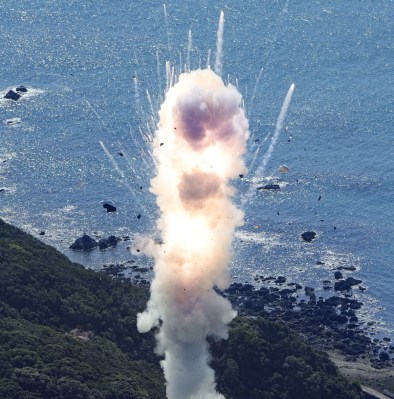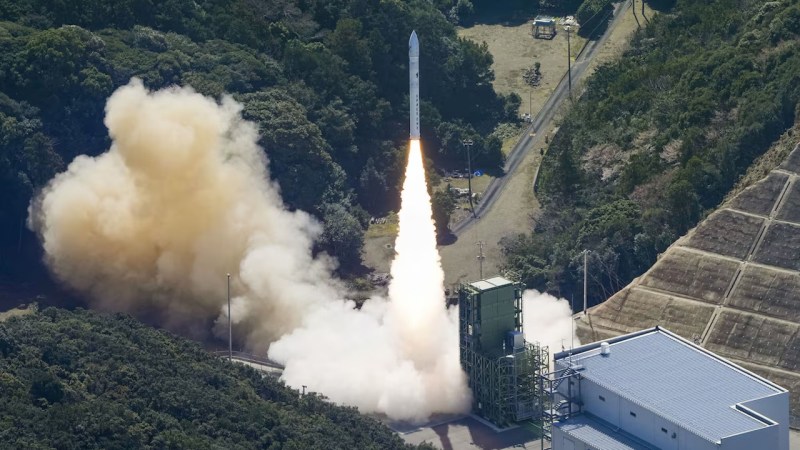Though it suffered through decades of naysayers, these days you’d be hard pressed to find anyone who would still argue that the commercialization of space has been anything but a resounding success for the United States. SpaceX has completely disrupted what was a stagnant industry — of the 108 US rocket launches in 2023, 98 of them were performed by the Falcon 9. Even the smaller players, such as Rocket Lab and Blue Origin, are innovating and bringing new technologies to market at a rate which the legacy aerospace companies haven’t been able to achieve since the Space Race.
 So it’s no surprise that other countries are looking to replicate that success. Japan in particular has been following NASA’s playbook by offering lucrative space contracts to major domestic tech companies such as Mitsubishi, Honda, NEC, Toyota, Canon, Kyocera, and Sumitomo. Over the last several years this has resulted in the development of a number spacecraft and missions, such as the Hakuto-R Moon lander. It’s also laid the groundwork for exciting future projects, like the crewed lunar rover Toyota and Honda are jointly developing for the Artemis program.
So it’s no surprise that other countries are looking to replicate that success. Japan in particular has been following NASA’s playbook by offering lucrative space contracts to major domestic tech companies such as Mitsubishi, Honda, NEC, Toyota, Canon, Kyocera, and Sumitomo. Over the last several years this has resulted in the development of a number spacecraft and missions, such as the Hakuto-R Moon lander. It’s also laid the groundwork for exciting future projects, like the crewed lunar rover Toyota and Honda are jointly developing for the Artemis program.
But so far there’s been a crucial element missing from Japan’s commercial space aspirations, an orbital booster rocket. While the country has state-funded launch vehicles such as the H-IIA and H3 rockets, they come with the usual bureaucracy one would expect from a government program. In comparison, a privately developed and operated booster holds the promise of reduced costs and a higher launch cadence, especially if there are multiple competing vehicles on the market.
With the recent test flight of Space One’s KAIROS rocket, that final piece of the puzzle may finally be falling into place. While the launch unfortunately failed shortly after liftoff, the fact that the private rocket was able to get off the ground — literally and figuratively — is a promising sign of what’s to come.
Space One
Founded in 2018 with investments from Canon Electronics, IHI Corporation and, Shimizu Corporation, Space One is a private spaceflight company that aims to provide competitively priced “smallsat” launch services.
By operating from their own private launch site, known as Space Port Kii, Space One believes they can offer a shorter lead time from contract agreement to flight than other providers. Located on the southernmost point of Honshu island, there’s no shortage of open ocean to the East and South, making it a perfect location for launches to several orbital inclinations.
The key partners in Space One aren’t just investors, either. According to the company’s website, each one brings something unique to the table thanks to their industry experience. For example Canon’s experience in producing cost-optimized mass market devices is identified as one way the company hopes to reduce the cost of their rockets and spacecraft.
KAIROS
The KAIROS rocket, which is Greek for “right time”, is the first launch vehicle designed and built by Space One. It uses three solid-propellant stages to place 250 kilograms (550 pounds) into low Earth orbit, and stands approximately 18 meters (59 feet) tall on the launch pad.

In terms of physical scale and payload capacity, the closest competitor to the KAIROS would have to be Rocket Lab’s Electron, which is roughly the same height (depending on payload fairing) and only slightly narrower. The Electron can carry 300 kg (660 lb) to orbit, though it should be noted that its payload capacity has increased over time as the vehicle has been incrementally improved, which may yet be the case with KAIROS.
Neither rocket is designed to compete directly with SpaceX’s Falcon 9 workhorse. These smaller rockets are looking to provide bespoke launch services to satellites which have specific schedule or orbital requirements that SpaceX can’t match (at least, not for the same cost) with their “rideshare” missions which carry multiple small satellites to the same orbital inclinations and altitudes simultaneously.
With that in mind, the fact that KAIROS is using solid rocket engines could be seen as a considerable advantage. While more difficult to control during operation, solid fuel engines are far cheaper and easier to build than their liquid counterparts. They can also be stored for long periods of time, and be launched at a moment’s notice. For this reason, solid rocket engines have long been used for intercontinental ballistic missiles (ICBMs) and other rocket-propelled weapons.
While Space One’s ambitions are naturally peaceful, the same traits that are important for an ICBM (long storage time, high reliability, instant availability) are also beneficial if you’re looking to offer short turnaround orbital launches.
On Small Step…
 KAIROS took to the sky for the first time on March 13th. While the rocket successfully cleared the launch pad, the flight termination system kicked in after roughly five seconds and completely destroyed the vehicle. At that point KAIROS hadn’t gained much altitude, so the wreckage fell back down onto the launch pad and ground equipment. There were no injuries, and the resulting fire was put out quickly.
KAIROS took to the sky for the first time on March 13th. While the rocket successfully cleared the launch pad, the flight termination system kicked in after roughly five seconds and completely destroyed the vehicle. At that point KAIROS hadn’t gained much altitude, so the wreckage fell back down onto the launch pad and ground equipment. There were no injuries, and the resulting fire was put out quickly.
As of right now, there’s been no official word on what caused the vehicle to self-destruct. Video of the flight, brief as it was, shows no obvious issues — the booster was flying straight and appeared to be stable. An investigation is ongoing, and hopefully we’ll know more soon.
In a statement to the press, Space One President Masakazu Toyoda said “We are taking what happened in a positive way and remain prepared to take up the next challenge”, while declining to categorize the launch as a failure.
While obviously not the result the company was hoping for, a first flight of a new rocket is always risky. Doubly so for a privately designed and built one. SpaceX, Rocket Lab, Firefly Aerospace, Virgin Orbit, Astra, and Relativity Space all experienced failures during the inaugural launch of their respective rockets. In fact, most of them suffered several failures. Like those companies, the future of Space One is going to depend on what happens on the second, third, and fourth flight.
















Vid of the launch and explosion https://www.youtube.com/watch?v=AErsimi1X2c
Holy cow!!! thanks for posting. The largest big burning hunk fell right smack back into the launchpad and kept burning! That place is a write-off!
Throttling up for liquid.
In amateur rocketry, the mixing and casting of solid propellant is a hugely difficult step to overcome.
small differences in propellant grain size and consistency create wild variation in burn times/ pressures
mixing constituent compounds to ensure even distribution of propellant and binders
vacuum degassing and pouring to ensure consistent fill and not leave air pockets
I imagine that there is a lot of relearning this for the new commercial attempts as well…
A lot of the institutional knowledge from the early space race and ICBM era is likely half lost due to age and retirement of people and the other half buried in mountains of corporate and manufacturer records or under NDA
3D print rocket fuel.
https://techcrunch.com/2022/09/27/firehawks-rocket-engines-and-3d-printed-fuel-hit-testing-milestones-ahead-of-first-launch/
I think this is one 3d printer I would not want to keep in the garage..
You laugh, but…
https://aerospaceamerica.aiaa.org/departments/3d-printed-rocket-fuel/
Gotta walk before you run, gotta blow up before you fly.
> Video of the flight, brief as it was, shows no obvious issues
I’m not armchair rocket scientist, but when I first saw the video it looked to me as if it tilted to an inclined atitude much too early, and that might’ve been the reason for termination.
That space one logo looks like the logo of my country’s first TV programme.
https://en.wikipedia.org/wiki/ARD_(broadcaster)
Could it be that space one hadn’t been a little copy kitten here? ;)
This is proven that rocket science is not so simple and the russians are really smart nation that even if accused that can’t make washing machine,instead can make rockets and nuclear power plants and even nuclear power sailing plants ,as well supersonic rockets. Don’t subestimate russians .Its a big country and can’t make small and simple domestic appliances ,but can make unique things that only they can makes. So,Japam is good on audio and video domestic appliance ,but high end rocket scietis another story . And yes,Russia helps North Korea to have rockets and nuclear weapons in order to keep away US “democracy”.